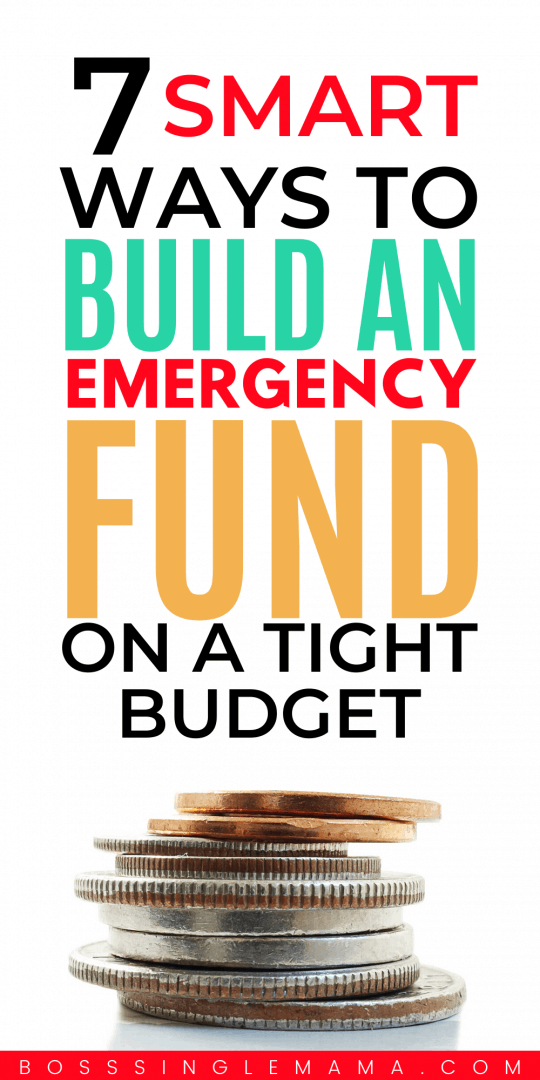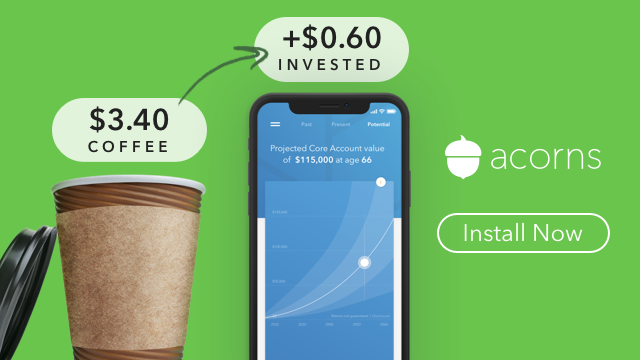Last Updated on December 22, 2021 by Rebecca Lake
Do you have a nice stash of emergency savings you can rely on when an unexpected expense pops up?
No? Don’t worry, you’re not alone.
Only 40% of Americans have enough in savings to handle a $1,000 emergency.
Because let’s face it, saving money is hard sometimes. Especially when you have kids.
And if you’re on a tight budget already saving some money for the occasional rainy day can feel impossible. But when it comes to your finances, it’s not a step you can afford to skip.
Why You Need to Have Emergency Savings
Having an emergency fund is so important and even more so if you’re living on one income. Here’s a great example from real life.
Right after I bought a home in 2016, my HVAC system conked out. It cost me $5,000 to replace it but I was able to cover it from emergency savings.
I’ve dipped into my emergency savings other times, too. To make car repairs, fix a leaking roof (homeownership is the best, right?) and take one of our dogs to the vet when she got a raging ear infection.
It’s been there to save me every time.
Emergency savings is a kind of financial insurance. It’s your just-in-case-something-goes-wrong money.
And you know, something always goes wrong, doesn’t it? It may not be a major thing but even a small unexpected expense could send you scurrying for your credit card.
Now you’re in an even tougher position to save because you’ve got debt to pay down.
If your budget is already tight, that can put even more strain on your money. And that’s an especially big challenge if you’re a one-income family.
I get it. It can be a vicious cycle.
But you can break it. You can build up your emergency savings, even when you feel like you don’t have a dime to spare.
How Much Money Do You Need to Save for Emergencies?
That’s a good question and there’s no perfect answer.
Some financial experts say three months’ worth of expenses is enough; others might say you need six or nine months’ worth of expenses socked away.
As a freelancer, I have well over a year’s worth of expenses in my emergency fund.
Running an online business is great. But just in case all my clients drop off the face of the earth at the same time I want to make sure I have enough in savings to cover the bills until work starts flowing in again.
If you’re starting from zero with saving money for emergencies, it’s totally fine to go small.
Aim for saving $500 or $1,000 to start. Even $100 in savings is something, especially if you’ve struggled to save anything up to this point.
Once you get that first little bit of cash tucked away in emergency savings, you can work on growing it.
And that’s what I want to help you with. So here are my best tips for growing your emergency fund when money is tight.
7 Tips for Growing Emergency Savings From Scratch
1. Put your budget under the microscope
Here’s a fun but boring fact: budgeting is key to financial security.
You can make a lot of money or a little but if you don’t budget it wisely, saving money is almost guaranteed to be an uphill battle.
Your budget is your plan for spending each month. And it’s also a tool for saving.
If you don’t have a budget yet, here’s the quick and dirty version of how to make one:
- Add up all of your income for the month, including money you have coming in from a full-time job, part-time gig, freelance work or a side hustle.
- Total up all of your expenses for the month and that means everything you spend money on.
- Subtract the second number from the first one.
Boom–you’ve just made your first rough budget.
That’s a simplified explanation of how to make a budget but that’s enough to get you started on the path to saving.
Once you’ve got a budget in place, it’s time to take a closer look at what you’re making and what you’re spending every month.
Start With Your Income
- How much money is coming into the household total?
- Do you have any business income?
- If you’re a single mama, what about child support or alimony?
Look at the total number, then consider how consistent your income is.
Are you more or less able to count on the same amount of money each money, or do you have more money to work with some months than others?
Review Your Spending
Divvy up your expenses based on what has to be paid each month to live and what you spend on everything else.
Look at the have-to-be-paid bills first.
That means your rent or mortgage payment, utilities, groceries, insurance, daycare, etc. Is there anywhere that you can carve out some savings?
It doesn’t have to be a huge amount. If you can trim $5 a month off your light bill and $10 a month off groceries, that’s a step in the right direction.
There’s a great money tool that can help with that. It’s called Trim and it’s a financial manager.
Trim reviews your spending for you and negotiates or eliminates expenses that just wasting money in your budget. For example, it can help you cut out bank fees or streaming subscriptions so you can funnel that money into emergency savings.
Ditch everything but the essentials
Go over every single thing you spend each month that’s not considered a bill.
If you’re already on a bare-bones budget, there may not be a lot of ground to cover. But even on the tightest of budgets, it’s still possible to find a few bucks to save.
When I was a newly single mom, coupons were a godsend for saving. I used coupons for literally everything, and still do because I see no reason to pay full price if I don’t have to.
I got used to buying store brands and my kids’ clothes came from the thrift store. Walmart clothes were a luxury.
I saved on gas by staying home as much as possible. If we went out to do something fun, it was to a park or a free event locally.
My income wasn’t much more than my expenses but I was able to save a couple of hundred dollars a month by basically being a cheapskate. It wasn’t a lot but it was enough to get my emergency savings fund started.
Related posts:
37 Helpful Money-Saving Hacks for Living on One Income
10 Tips for Living (and Thriving) on a Tight Budget
100+ Best Frugal Living Tips for Families to Save Money
2. Decide where to keep your emergency savings
Keeping your emergency fund in your checking account is convenient. It’s also a huge mistake.
It’s easier to spend that money on non-emergencies when it’s sitting there tempting you.
Opening a separate savings account that’s linked to your checking account is the better choice. And an online savings account can help you grow your money faster.
Online banks tend to have lower overhead fees than brick-and-mortar banks. That means they tend to charge fewer fees and they can pay you higher rates on your savings.
If you’re looking for a savings account recommendation, I like CIT Bank.
Their Savings Builder Account offers a great interest rate and no monthly fees. You just need $100 to open your account and get started and you could even qualify for a cash bonus.
Whichever bank you choose for your emergency savings, link it to checking so that it’s accessible when you need it. And watch out for fees that could eat into your interest.
3. Automate your savings plan
Saving is a hard habit to get into if you’re not used to it, no lie.
“Pay yourself first” is a mantra you’ll hear from a lot of finance experts but that’s sometimes easier said than done. Automating can go a long way toward solving that problem.
There are a few different ways you can automate your savings.
For example, if you get paid through direct deposit you could ask your HR department to reroute some of it into a savings account instead of putting it all in checking.
Or you could set up automatic transfers through your bank account every payday. This way, money gets moved to savings automatically so you don’t have time to spend.
A third option, and the one that might be easiest if you’re struggling to grow your emergency fund is letting an app save money for you.
Acorns, for example, scans your bank account and rounds up transactions. Your spare change is saved in an investment account.
It’s super easy and you don’t have to do anything other than sign up for an account and link your checking to start to saving.
Digit works the same way. The Digit app checks your linked bank account and moves money you’re not using from checking to savings.
These are easy-peasy options for adding to your emergency savings. And really, when you’re trying to save then making it easy might be the best thing.
4. Use a no-spend challenge to save money fast
If you’ve never done a no-spend challenge to save money, there are some great reasons to try it.
A no-spend challenge means you agree to only spend money on essentials for a set time frame. So you might do a spending freeze for a week or a month. Heck, there are some personal finance bloggers out there doing year-long spending diets.
There are some basic rules for starting a no spend challenge and sticking to it:
- Decide how long you’re going to try a spending diet
- Figure out what your wants vs. needs are
- Set boundaries for what you will and won’t spend money on
- Get the whole family on board
- Track your savings progress
A no spend challenge can be a little scary if you’ve never done it before. But once you try it, you’ll be amazed at how much money you could save.
If you need some help on getting started with using a spending fast to build savings, check out these posts:
10 Simple Rules for Crushing a No Spend Challenge

5. Save your windfalls
If you’re really struggling to make your budget work because your bills are too high or your income is too low, you can use found money to build your emergency fund.
So what’s found money?
It’s basically any money that comes your way that you weren’t budgeting for or expecting.
That covers things like:
- Tax refunds
- Cash birthday gifts
- Rebates
- Pay raises
- Returned deposits
- Cash bonuses you get for opening a new checking account
It doesn’t really matter how big or small these “extra” amounts are. Even $5 helps.
It just matters that you commit to saving it.
In fact, it’s actually better when you’re dealing with small amounts because you may be less tempted to spend any of it.
If you’re getting a $3,000 tax refund, for example, it’s a lot harder mentally to pledge it all to savings when you want to blow some of it on a family vacation or go shopping.
That doesn’t mean you can’t spend anything when you’re trying to grow your emergency savings, though. I’m all for treating yourself occasionally.
Just remember to keep the right balance between spending extra money and saving it.
6. Take advantage of money-saving apps
I love money-saving apps because they make it insanely easy to grow your cash cushion.
They all work differently but here’s the general idea: you spend money through the app and earn some of it back as cash or gift cards.
The great thing about using apps to build an emergency fund is that you can sign up for more than one and most of them are free to use. If you need some recommendations for money-saving apps, here are my top picks:
7. Make more money to save money
If you’ve tried all these tips and you still can’t eke out even $5 a month to save, it’s time to think about what you can do to bring in more money each month.
There are so many ways to do this and a lot of them you can do from home.
For example, check out these online business ideas that are great for moms:
- Become a freelance writer and get paid to write for blogs or websites
- Start a virtual assistant business
- Teach classes for kids on Outschool
- Learn how to proofread or get paid to be an editor
- Make homemade crafts and sell them on Etsy
- Get paid to transcribe
- Become an Amazon by fulfillment seller
There are things you can do offline to make extra money too, like offering childcare in your home for other moms. Or you could start a dog-walking business through Rover.
Starting a blog is another option for making money online.
The four biggest ways you can make money blogging are affiliate marketing, sponsored posts, ads and selling your own products.
Now, let me be upfront and say that there can be a HUGE learning curve with blogging. I’m definitely still figuring things out.
But a blog could be a great way to bring in extra cash from home and grow your emergency savings.
(And if you’re ready to start a blog, check out my step by step tutorial, to get set up with blog hosting from Siteground!)
Bottom line, I am a serious fan of taking charge of your income.
When I became a single mom, I knew I didn’t want to have to work a mindless job I hated just to pay the bills. I launched my freelance writing business and never looked back.
Apart from the flexibility I have working from home, the financial payoff has been amazing. And I’ve been able to really grow my savings and income.
Which is what you want to do too, right?
So if you haven’t thought about it yet, really consider whether starting an online business or side hustle could be just what you need to start piling up some cash.
Related posts:
How to Start a Side Hustle: An Ultimate Guide for Moms
How to Easily Declutter Your House to Make Extra Money
20+ Creative Ways to Make Money in 2020
23 High-Paying Freelance Services Moms Can Offer From Home
Are you ready to grow your savings?
Do you have a killer tip for building up an emergency fund on a tight budget?
Head to the comments and tell me about it, then pin and share this post if it helped you!



Comments are closed.